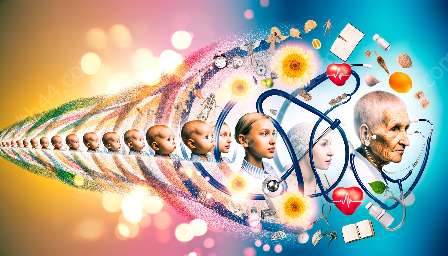Physical development across the lifespan is a fascinating and crucial area of study within the field of human development. It involves the changes that occur in the body and the fine-tuning of motor skills and coordination from conception to old age. It is intrinsically linked to overall health and well-being. In this topic cluster, we will explore the various stages of physical development, the impact on overall health, and its significance in health education and medical training.
Infancy and Early Childhood
The journey of physical development begins in infancy and early childhood. In the first year of life, infants experience rapid growth and development, marked by significant milestones such as lifting their heads, rolling over, sitting up, and eventually walking. These achievements are the result of neural and muscular development, propelling infants towards greater independence and mobility.
As children progress into early childhood, their physical abilities continue to advance. They refine their motor skills, gain better control over their movements, and develop hand-eye coordination. These foundational experiences lay the groundwork for more complex physical activities in the years to come.
Adolescence and Puberty
The onset of adolescence brings about notable physical changes, primarily driven by hormonal fluctuations. Puberty heralds the development of secondary sexual characteristics, as well as significant growth spurts and changes in body composition. For many individuals, this period can be both exciting and challenging as they navigate these physical transformations.
Moreover, this stage marks a critical window for health education and medical training, as adolescents need support and guidance in understanding and managing the changes occurring in their bodies. Educators and healthcare providers play a pivotal role in fostering positive body image and promoting healthy habits during this formative period.
Adulthood and Aging
Adulthood encompasses a broad span of life, characterized by different physical changes and challenges. During this phase, individuals strive to maintain their physical well-being through exercise, nutrition, and healthcare practices. The aging process, albeit gradual, brings about inevitable changes in physical function, including declines in muscle mass, bone density, and sensory acuity.
Understanding physical development across the lifespan is indispensable for healthcare professionals and educators involved in medical training. It enables them to provide tailored care for individuals at various life stages, addressing their unique physical needs and promoting healthy aging strategies.
Health Education and Medical Training
Physical development forms the cornerstone of health education and medical training. Educators and healthcare professionals must possess a deep understanding of the physical changes that occur across the lifespan in order to provide effective guidance and care to individuals of all ages.
In health education, the study of physical development serves as a basis for teaching students about the importance of physical activity, nutrition, and overall wellness. By comprehensively understanding the needs of individuals at different life stages, educators can tailor their curriculum to promote lifelong health and disease prevention.
Moreover, medical training programs integrate the concept of physical development across the lifespan into their curriculum. Healthcare providers must be adept at recognizing and addressing age-related physical changes, as well as understanding how these changes may impact diagnostic procedures and treatment plans.
Conclusion
Physical development across the lifespan is an integral part of human development, with far-reaching implications for health, wellness, and healthcare. Its study enriches our understanding of the human body's remarkable capacity for growth, adaptation, and resilience. By embracing this holistic perspective, we can nurture healthier individuals and communities across generations.


